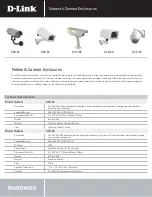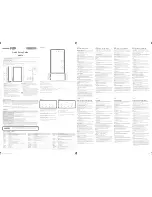
WRS Wireless Rain Sensor
8
4. Maintenance
Battery
The Wireless Rain and Freeze Sensor operates automatically and usually requires no
regular maintenance other than replacing the batteries in the Rain and Freeze Sensor
(Transmitter) every three (3) years. Replace the batteries with two Panasonic CR2032
3V or equivalent replacement. Rain Bird Part Number 651009 - CR2032 lithium battery.
To change the battery refer to the instructions and diagram below.
7
WRS Wireless Rain Sensor
Set Vent Ring
The vent ring determines “drying time” – the length of time the sensor turns off irrigation
after a rainfall. For most installations, set the vent ring to the fully open position.
For some installations, such as sites where water pools after
rainfall, set the vent ring to a partially open position. This will
shut down the irrigation system a little longer after a rain.
To set the vent ring, turn the vent ring knob below the dial
cap to the desired position, as shown in
Illustration 11.
Set Freeze Setting
The Wireless Rain Freeze Sensor (on Wireless Rain/Freeze
product only) is programmed to automatically shut off when
the temperature reaches 3°C. It is not temperature
adjustable.
3. Testing the System
It is recommended that you check the Transmitter and Receiver side by side prior to
mounting the Sensor. It is also recommended that the Low Power Test be completed
successfully.
Once installed, the completed system can be tested by turning on any controller irrigation
zone, verifying that zone does come on, and then pressing down on the Rain Sensor pin
located on the top of the dial cap. The irrigation system should stop watering within a few
seconds. If the system does not shut off, review the installation process to ensure the
system is correctly installed.
For assistance, call Rain Bird Technical Services at 800-247-3782 (USA and Canada only).
Vent Ring
11
Changing Transmitter Batteries
(Requires two – CR2032 batteries)
(1) Remove two screws located on top of the
transmitter.
(2) Remove top half of housing.
(3) If rectangular seal does not stay
assembled to top half of housing, remove
from bottom half.
(4) Carefully push up on antenna to release
transmitter board.
(5) Use a screwdriver to slide batteries out of
battery clip. (
NOTE:
Be careful not to bend
the metal clip; this clip ensures a secure
battery fit).
(6) Slide in new batteries with “+” side on top. (
NOTE:
Do not push the small ‘SW1’
button on the bottom of the transmitter board. If pushed, the transmitter will go to
sleep after 10 hours).
(7) Re-insert transmitter board into bottom half. (
NOTE:
Pay careful attention to the
alignment of the seals on the bottom of the board. The bottom of each seal should be
positioned into the appropriate hole prior to pushing the board fully into place).
(8) Ensure rectangular seal is securely replaced on the underside of the top half of the
housing. (
NOTE:
Press down on the metal collar to ensure that the seal has snapped
into its proper place).
(9) Re-assemble the two halves of the housing ensuring that the button actuators are
aligned. (
NOTE:
An arrow will be formed on the outside end of the housing if the
halves are aligned properly).
(10) Re-install screws. It is not required to reprogram the Transmitter with the Receiver
after changing batteries. If necessary, however, follow the instructions in
"Programming the Transmitter and Receiver Pair" section.
Transmitter
In addition, the fibrous disks inside the Transmitter dial cap sometimes become
contaminated with debris or insects. If this happens, use the following procedure to
clean the Rain Sensor.
1. Turn the dial cap to the
3
⁄
4
" rainfall setting, as shown in
Illustration 12.
2. Press the tab labeled “Press” on the side of the sensor
body. Then turn the dial cap about 1 and
1
⁄
4
turns further
to remove the cap from the sensor body.
3. Remove the plunger and disks from the sensor body,
and wash them in clean water.
4. Reinstall the plunger and disks into the cap first, then
screw the cap onto the sensor body. Reset the rainfall
setting to the desired position.
Removing Transmitter from Receiver’s Memory
To reset the receiver (clear all Transmitters) press Bypass button during power up.
12
Product Specifications
Transmitter
Size:
3 x 2 x 9 inches
(8 x 5 x 23 mm)
Batteries:
2 ea. #CR2032
Frequency: 433.92 MHz
Receiver
Size:
2
3
⁄
4
x 1
1
⁄
2
x 9 inches
(7 x 4 x 23 mm)
Voltage:
22.0 - 30.8 VAC
(from the controller)
Relay:
SPDT, 3 Amp, 125 VAC
This device complies with part 15 of the FCC Rules. Operation is subject to the following
two conditions:
(1) This device may not cause harmful interference, and
(2) This device must accept any interference received, including interference that may
cause undesired operation.
The term “IC:” before the certification/registration number only signifies that the Industry
Canada technical specifications were met.

























